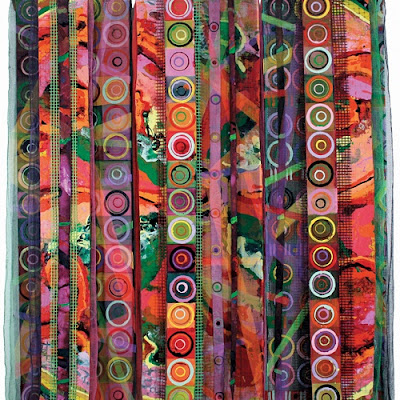
And yet, Wearing’s work also provides us with other, more performative indices of selfhood: a gold ring worn on the middle digit (which traditionally communicates individuality), and a set of painted nails, each of which displays a different colour, seemingly cribbed from Piet Mondriaan’s palette of reds, blues, yellows, whites and blacks.

Cast a hand, and you’ll also cast a set of finger-prints – a unique physiological marker that persists throughout our lives. On one level, her sculptural method appears to guarantee a certain degree of truthfulness. Wearing’s My Hand is a self-portrait of sorts, but unlike conventional self-portraits it is not a depiction of the artist’s face, but a wax cast of her right hand. We re-enact moments from our lives in our memories, have different ways of interacting we know and those we don’t.” Identity, in short, is not something whole and immutable, but rather a shifting, fragmentary constellation. As she has said: “We are all performers, we perform ideas of ourselves in our heads, project our future selves. Crucially, this is not only about offering up an image of ourselves to others. ’s practice is the question of how human beings self-present – the masks they wear, the disguises they adopt, and the possibilities of freedom these things offer. If the artists who made them are, in a sense, archaeologists, then their field of study is very much the present day.Īt the heart of the Turner Prize winning British artist While several of these draw on the antique past (and its often-deceptive remnants), they also speak to a range of 21st century concerns, from rage against unbridled capitalism to environmental degradation, from the persistence of the patriarchy to the mutability of identity. Fragments are compelling precisely because we can seldom be sure what it is they really are.įor this edition of Group Show, we bring together six works from the Artspace gallery that focus on the fragment. It tells a partial story, freighted with ambiguities, and this creates space for speculation, even poetry. Digging up shards of broken pottery, or a disembodied marble limb from a statue of what might have been a god, or a long-dead emperor, they must use these fragments to infer a disappeared and perhaps irrecoverable whole.Ī fragment is a clue to what’s missing, then, but it is also something with its own fascination. Archaeologists are accustomed to interpreting the past through its incomplete material record.


 0 kommentar(er)
0 kommentar(er)
